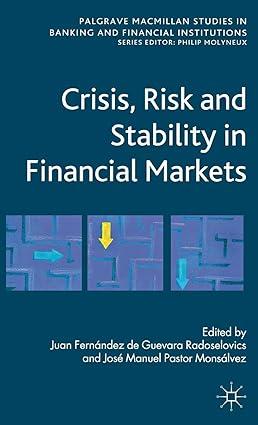Question
It turns out that cows are major producers of Methane, a greenhouse gas that is many times more potent than CO2. Recently, the government has
It turns out that cows are major producers of Methane, a greenhouse gas that is many times more potent than CO2. Recently, the government has gotten interested in encouraging farmers to reduce their methane emissions. Lets investigate this issue. In 2007, in New York State, there were approximately 600,000 cows producing a total of 10M tons of milk and emitting a total of 70,000 tons of methane. Suppose that the demand for milk is represented by the curve WTP=80-6Q and that MC=15+.5Q where Q is in Million tons of milk, and WTP and MC are measured in cents/lb. Suppose that the environmental damage caused by milk is such that the MSC=25+2Q. Use BOTH a graph or graphs and algebraic computation to answer the following questions.
A. What tax, on milk, would achieve the EFFICIENT quantity and price for milk?
Looking at the problem another way, lets focus on the methane emissions themselves rather than milk production. Suppose that MAC=70000-X where X is tons of methane and MD=.35X and MAC and MD are measured in $/ton of methane.
B. What is the efficient level of methane emissions from cattle?
C. Assuming that damages caused by methane are not currently paid by the farmer (i.e. they are an externality), what is the emissions tax (per ton of methane) that would achieve the efficient level of emissions?
Now, consider a representative farm with 100 cows. The MAC=150-.01X for this farm where X is now measured in kgs of methane (and the MAC curve is in $/kg). Suppose the optimal tax is $15 per kg.
D. Suppose, an innovation is available which would allow the farm to reduce its MAC curve to 75-.01X. If the farm innovates, and faces the tax above, how much will the farm emit? What is the most the farm would pay to adopt this innovation assuming that the tax DOES NOT CHANGE (ie. , what are the farms short-run savings from innovating)?
E. suppose there is no tax, but the government sets a standard at 7000 kgs of methane and the farm must comply (or face a SEVERE penalty). Faced with the same possible innovation, what is the most the farm would pay under this policy for the innovation, if the standard DOES NOT CHANGE?
Step by Step Solution
There are 3 Steps involved in it
Step: 1

Get Instant Access to Expert-Tailored Solutions
See step-by-step solutions with expert insights and AI powered tools for academic success
Step: 2

Step: 3

Ace Your Homework with AI
Get the answers you need in no time with our AI-driven, step-by-step assistance
Get Started


